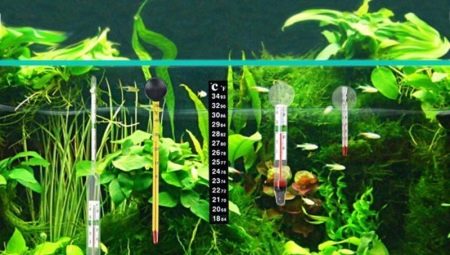One of the main conditions for the successful maintenance and breeding of aquarium fish at home is the optimum water temperature. For most species of ornamental fish, body temperature depends on the temperature of the aquatic environment. Comfortable is in the range of 23-28 degrees. Many exotic tropical fish are quite sensitive to temperature fluctuations, which can lead to their death. Thus, a quality thermometer is simply necessary for both amateurs and experienced aquarists.
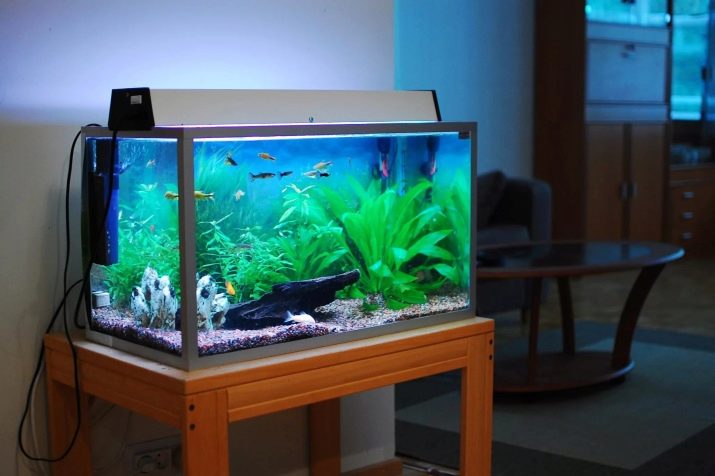
Aquarium Thermometer Models
A wide range of thermometers for aquariums is represented by a variety of models, each of which has its pros and cons. Depending on what is used as an indicator of temperature, the following varieties are distinguished.
- Alcohol devices consist of a glass flask inside which a tinted alcohol solution is placed. In fact, they resemble thermometers for measuring outdoor temperature. They are mounted inside the aquarium using suction cups. This model should be placed away from the heater, in a place where it is convenient to monitor the thermometer. When buying, you must consider that it is problematic to install it in a round aquarium. However, this model is the most common and has good accuracy indicators.
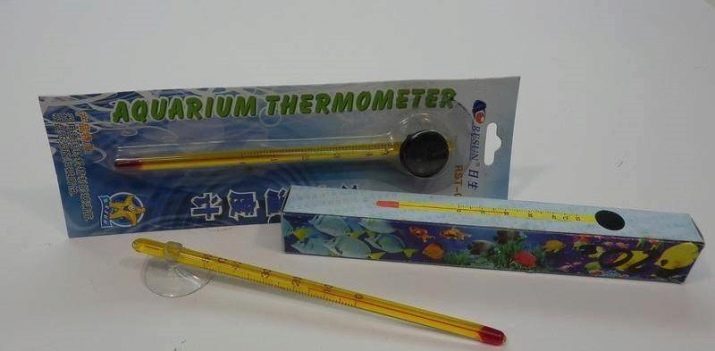
- Liquid crystal They are thin plastic stickers on which thermochemical paint with a scale is applied on one side, which changes color when the temperature changes, and on the other, an adhesive substance for attaching to the outside of the aquarium wall.Since sticking the thermometer to another place is fraught with damage to the markings of the scale, it is better to carefully choose a place for location. Similar devices are suitable for all types of aquariums.
The accuracy is greatly affected by the thickness of the glass, direct sunlight and heating devices, if they are nearby. Thus, the data of this type of thermometer may be inaccurate due to the fact that it is affected not only by the temperature of the water in the aquarium, but also by the air in the room.
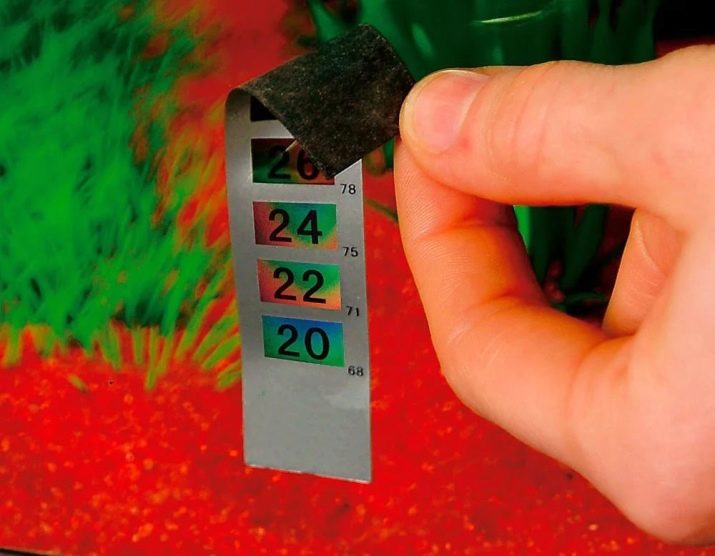
- Spiral thermometers determine the temperature of water by compressing and straightening a special sensitive spring.
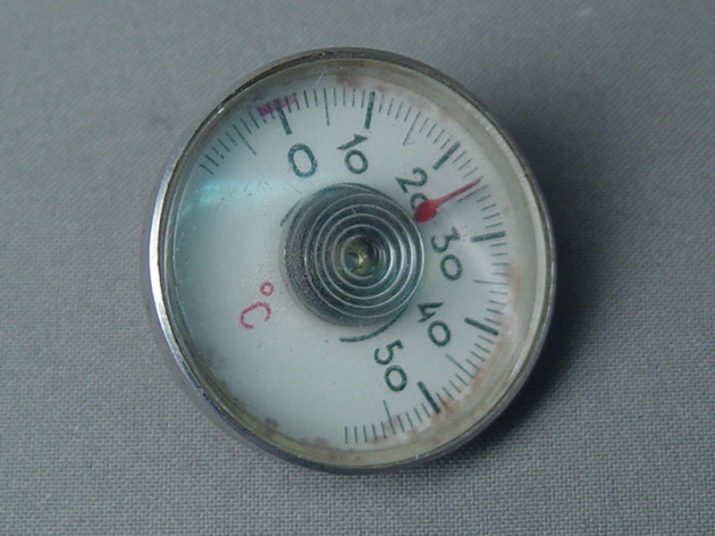
- Electronic temperature meters. Distinguish electronic thermometers with a built-in measuring sensor and with an external one. They are the most accurate, convenient and expensive. The batteries last for several months of operation. Models with a remote sensor consist of two parts - the sensor itself, which is immersed in water, and a digital display, it can be positioned as you wish.
With it, you can determine the temperature of not only water, but also the soil in different parts of the aquarium.
Varieties with a built-in sensor are completely tight and are fixed directly on the suction cups inside the aquarium. A sound signal informs of changes in water temperature in the aquarium.

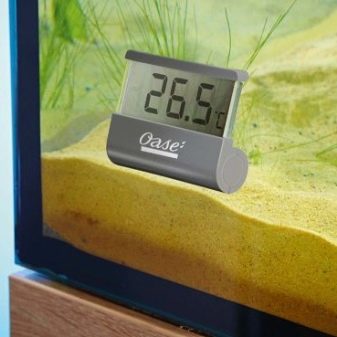
Types of mounting type
Such devices can be fixed on the external or internal surface of the aquarium wall. using suction cups or adhesives, and can also be on the surface of the water, like a float. Besides, there are hook-shaped modelsthat cling to the edge of the aquarium, which avoids cases where the suction cup has detached and the thermometer has surfaced.
After all, over time, a suction cup made of silicone is worse fixed on the surface, loses its quality in water. And some curious fish may even try to unstick the thermometer. There are also special mini-thermometers for small aquariums, designed not to spoil the appearance and not interfere with admiring the aquarium inhabitants. All this must be considered when choosing a suitable device.
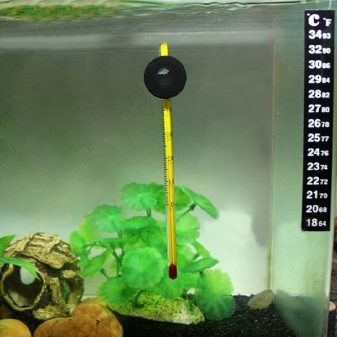
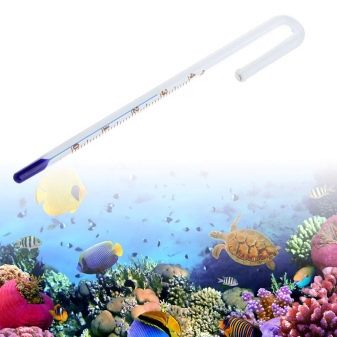
General location guidelines
In addition, certain rules for the placement of thermometers must be observed so that their readings are correct. For example, they must be placed on the opposite wall from the heater or lamp. Liquid immersion thermometers need to be fixed to the inside of the aquarium wall in the middle layer of water. Many types of aquarium heaters have a built-in instrument for measuring temperature fluctuations. But this data can be with a large error. therefore the presence of an autonomous thermometer is a necessary tool for monitoring the temperature regime.

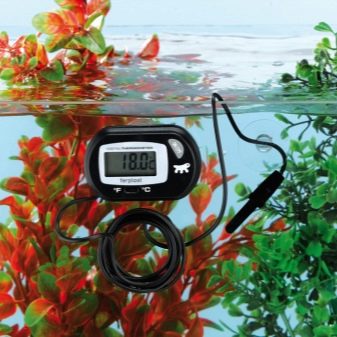
Experienced aquarists advise using at least two models of thermometers for better temperature monitoring. Indeed, depending on the volume of the aquarium and the power of the heater, the difference in performance can be significant. For example, you can purchase one glass liquid and attach it to the lower level, and the other in the form of a sticker, fixing it closer to the surface.
Thus, you can most closely monitor temperature indicators, because the right temperature will preserve the health of the inhabitants of the aquarium and can even contribute to the treatment of diseased fish.
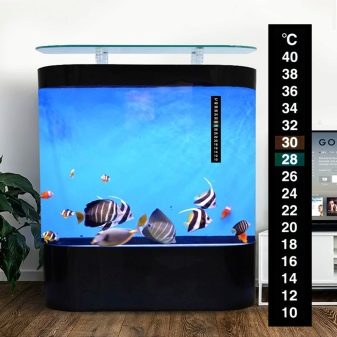
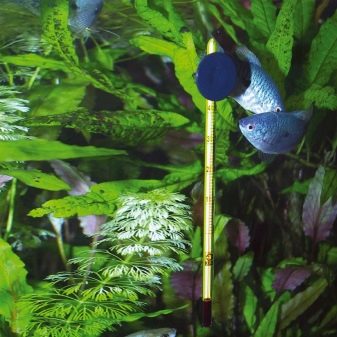
A review of the thermometer sticker for the aquarium awaits you next.
